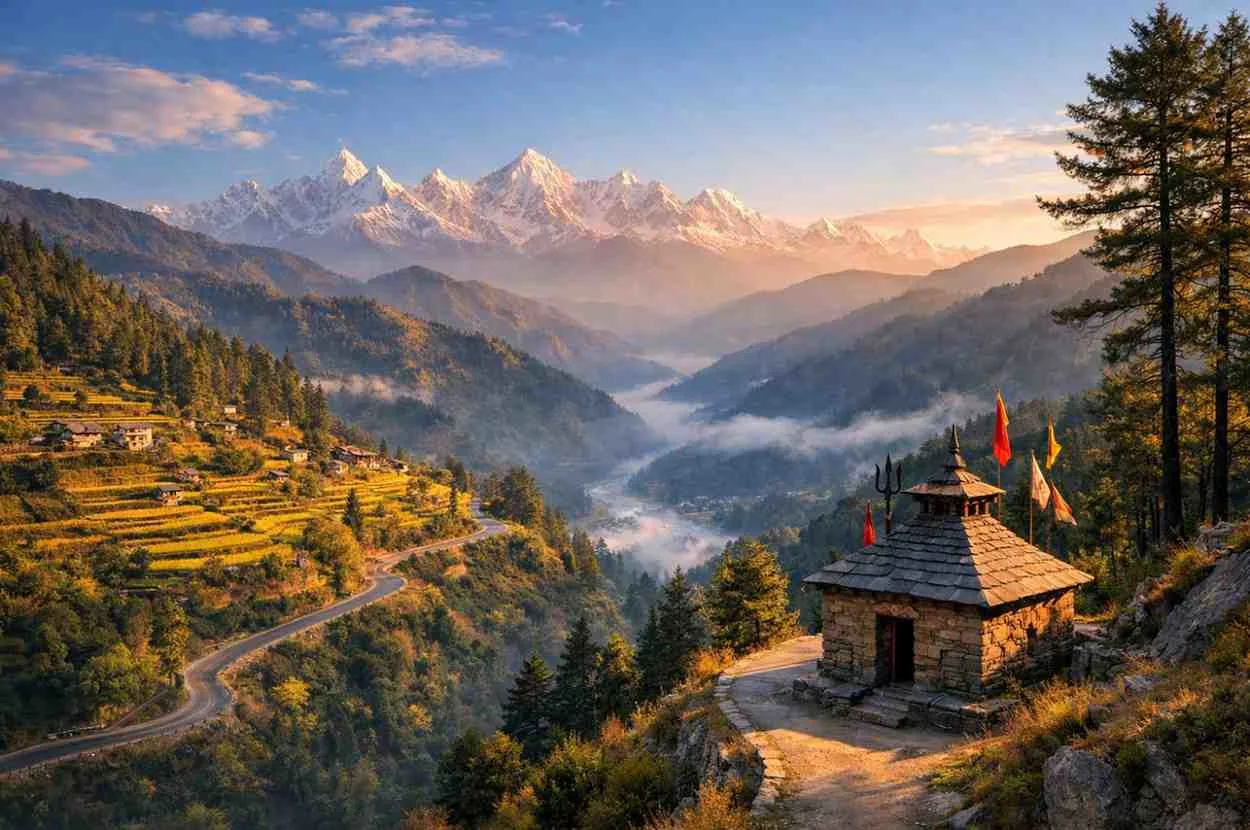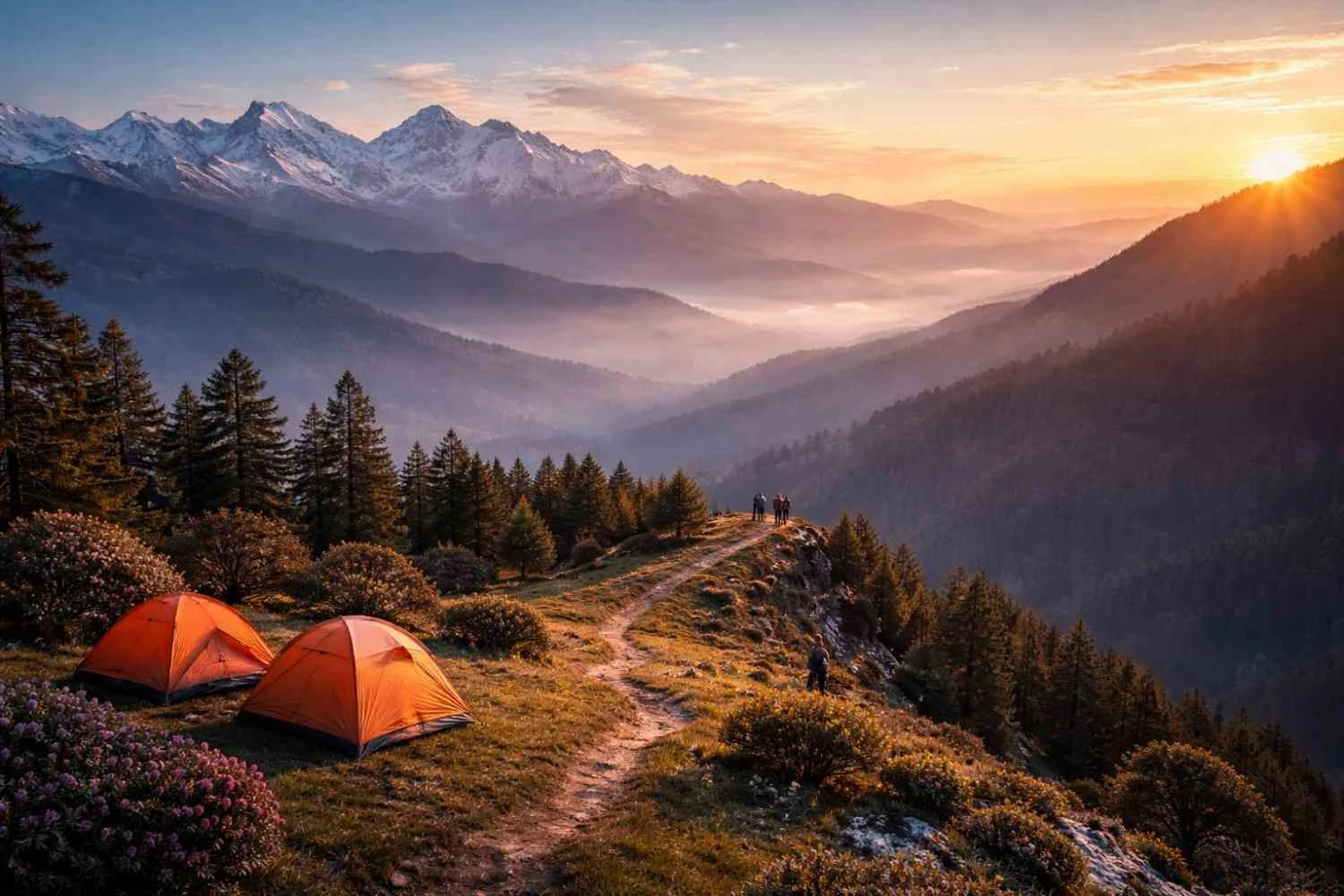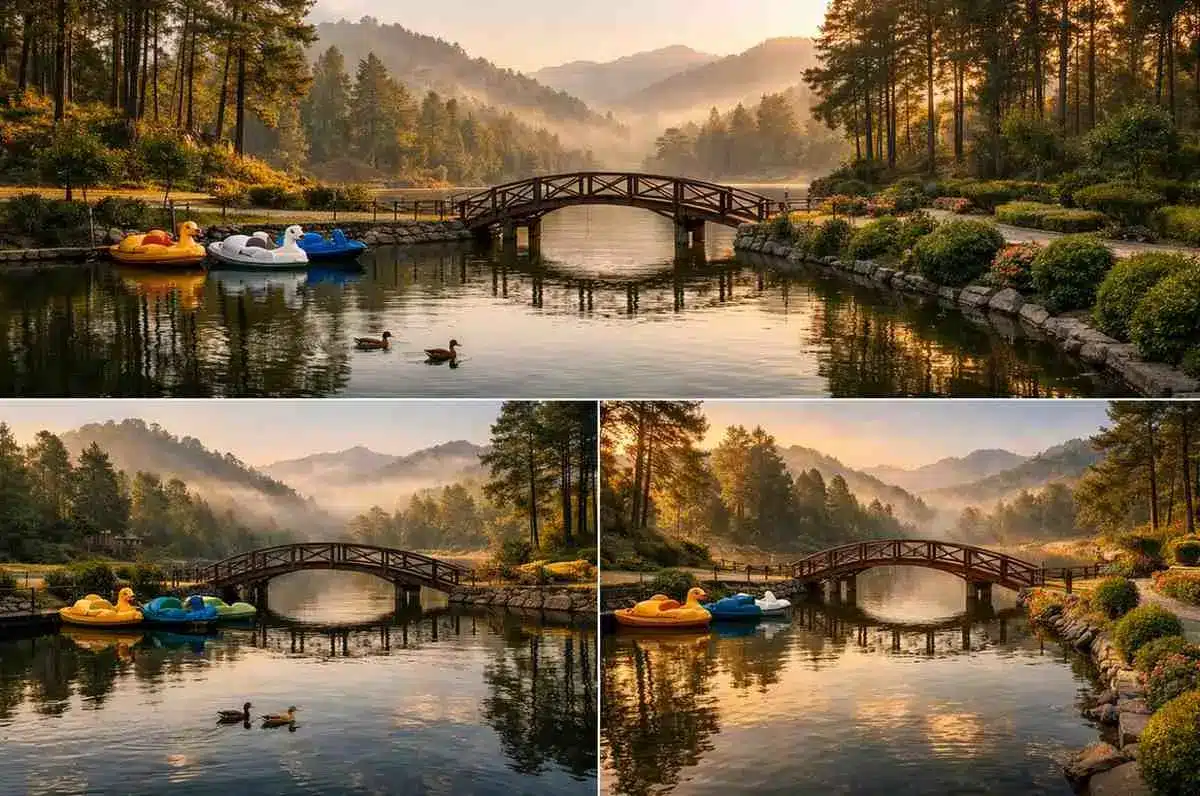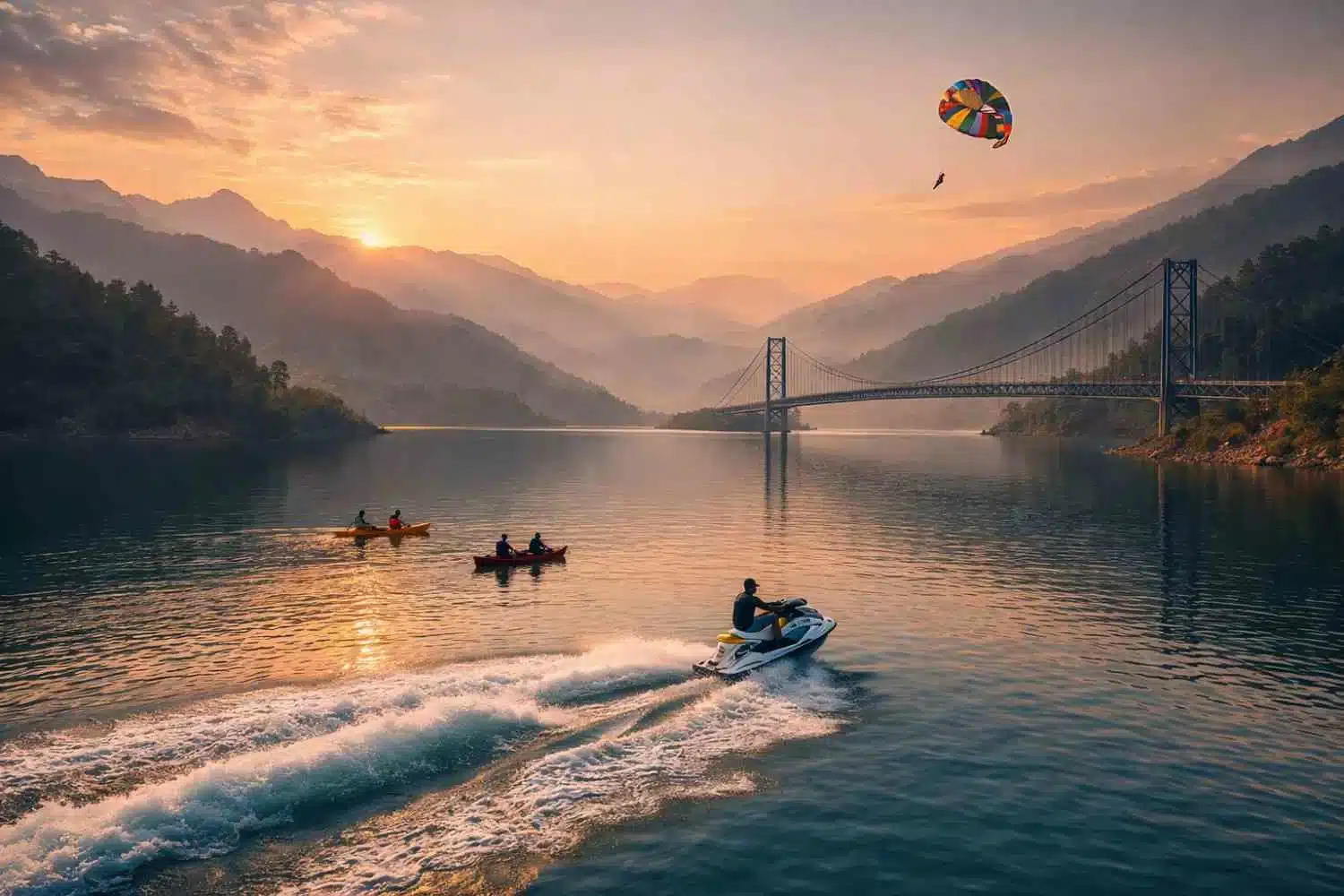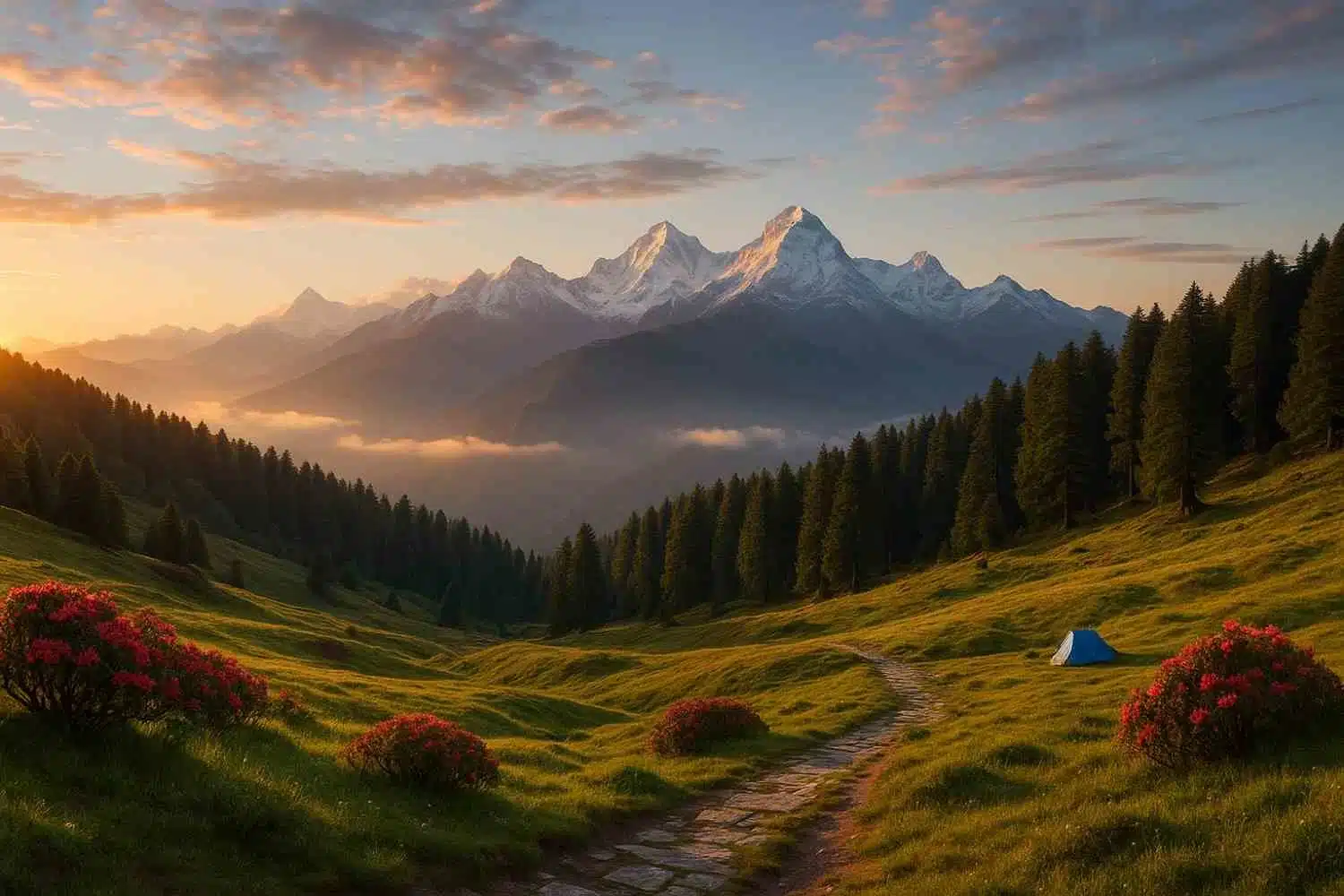(8 min read)
Introduction
Thousands of pilgrims visit the sacred Manimahesh Lake, thought to be Lord Shiva’s dwelling, during the Manimahesh Yatra in the Indian Himalayas. This yatra in Bharmour, Himachal Pradesh, at 4,080 metres (13,390 ft) provides spiritual fulfilment and an arduous journey through stunning scenery.
Manimahesh Yatra 2024
The 2024 Yatra will run from August 28 to September 11. The pilgrimage is best around Janmashtami, a holy holiday with the optimum weather for the long travel.
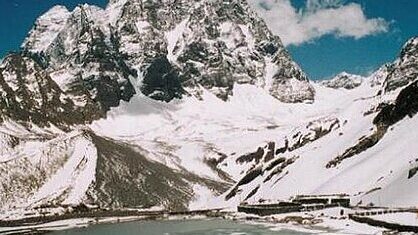
Historical and Religious Significance of Manimahesh Yatra
Mythological Background of Manimahesh Yatra
Shiva constructed Manimahesh Lake after marrying Parvati, according to Hindu legend. He is said to live here and bless his pilgrims on their difficult journey. “Manimahesh” means “Shiva’s jewel,” alluding to the deity’s jewel-encrusted crown.
Importance in Hindu Religion
Hindus revere Manimahesh Yatra like Amarnath and Kailash Mansarovar. A plunge in Manimahesh Lake’s sacred waters is supposed to cleanse sins and lead to moksha.
Lord Shiva and Manimahesh Lake Legends
The mythology of Lord Shiva’s trident (trishul) on Manimahesh Kailash summit is legendary. Pilgrims think the mountain is Shiva and the water is his creation for spiritual purification.
Plan Your 2024 Manimahesh Yatra Registration
All pilgrims must register with the Himachal Pradesh Tourism Department for a seamless journey. Their website and Bharmour and Chamba centres accept registration.
Required Permits and Proof
Aadhar cards, passports, and voter IDs and medical fitness certifications are required for pilgrims. Foreigners must register and get permissions locally.
Pilgrimage Schedule and Dates
Bharmour hosts the Yatra’s opening ceremony on August 28, 2024. The pilgrimage peaks on Radha Ashtami, September 11, 2024. The most spiritually fulfilling journey should be planned at this time.
Route to Manimahesh Yatra
Detailed Main Route Description
Two primary paths go to Manimahesh Lake:
1. Hadsar route: The most popular path begins in Hadsar village. The 13-kilometer hike from Hadsar to Manimahesh Lake passes through thick forests, difficult terrain, and breathtaking sceneries.
2. Kugti route: From Kugti hamlet, the Kugti Route is more difficult and less travelled. This lengthier path with difficult ascents recommended for experienced hikers.
Base Camp Transportation Options
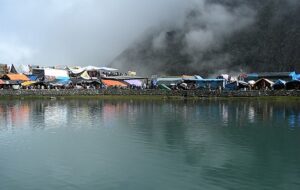
Hadsar and Kugti base camps are accessible by road from Chamba. From Chamba to Bharmour, Hadsar, and Kugti, buses and taxis run regularly.
Trekking Routes and Difficulty
Hadsar to Dhancho: A 4-5-hour, 6-kilometer moderate walk.
Dhancho to Manimahesh Lake: The 7-kilometer climb takes 5-6 hours.
Longer days and high-altitude passes make the Kugti route better for experienced hikers.
Alternative Routes and Their Importance
Some pilgrims start from Lahaul Valley via Kugti Pass. Though secluded, this road provides unmatched natural beauty and solitude.
Manimahesh Yatra Preparation: Physical Fitness and Health Considerations
Pilgrims should prepare two months in advance because to the high altitude and physical challenges. Regular cardio, strength, and acclimatisation treks are advised.
Pact Essential Items
Clothing: Pack essentials such as layers, thermal apparel, waterproof coats, gloves, and sturdy hiking shoes.
Trekking gear: Backpack, poles, sleeping bag and waterproof tent.
Medical Kit: First-aid, altitude sickness, and personal medicines.
Acclimatisation Tips for High Altitudes
Spend a day or two at Bharmour or Hadsar to adjust. Stay hydrated, eat light, and avoid alcohol.
Safety and Emergency Contacts
Keep an emergency contact list on a charged phone. Report your excursion to local authorities and travel in a group.
Key Highlights of Manimahesh Yatra:
The Manimahesh Yatra highlights include religious rituals and customs at Manimahesh Lake.
Pilgrims plunge and worship to Shiva at the lake. The Mani Mahesh Kailash summit is typically clouded, yet devotees consider a clear view a gift.
Important Route Stops and Temples:
Bharmour: The Chaurasi Temple complex is in Bharmour.
Dhancho: A popular stop with food and shelter.
Natural beauty and breathtaking scenery
The walk provides amazing views of snow-capped mountains, alpine meadows, and waterfalls. The beautiful Manimahesh Kailash peak is stunning.
Local culture and traditions
Experienced local customs while on the Yatra, experience the hospitality and cultural legacy of the Gaddi people. Attend local festivals and religious rituals to immerse yourself.
Accommodation and Facilities for Manimahesh Yatra
Options for Base Camp Accommodation during Manimahesh Yatra.
1. Bharmour and Hadsar have hotels.
2. Himachal Pradesh Tourism Department and commercial operators set up tents in Dhancho and around the lake.
Access to Food and Water
Langars (community kitchens) feed pilgrims for free. Bring portable water purifiers or pills for safe drinking.
Medical Support and Facilities Along the way
Basic medical services exist at Bharmour and Dhancho. Trekkers have access to emergency medical personnel.
Health and Sanitation Tips
Biodegradable goods and responsible trash disposal. Major stations have portable restrooms.
Environmental and Ethical Considerations for Manimahesh Yatra
Importance of eco-friendly practice
Regarding the Manimahesh Yatra, consider the importance of eco-friendly practices and “Leave No Trace” ideals. Avoid plastic and use reusable bags and water bottles.
Ecological Preservation and Waste Management
Join local NGO and government clean-ups. Place all rubbish in specified places.
Respecting Local Customs and Religion
Respect local customs and religion. Be humble and ask permission before photographing individuals or holy sites.
Conclusion
Manimahesh Yatra is a pilgrimage, spiritual trip, and natural beauty. The Yatra transforms pilgrims with its rich history and religion. A safe and enjoyable trip requires planning, preparation, and respect for the environment and local customs. May Lord Shiva bless all pilgrims on this hallowed route.
Also Read: Dharamshala to Chamba

